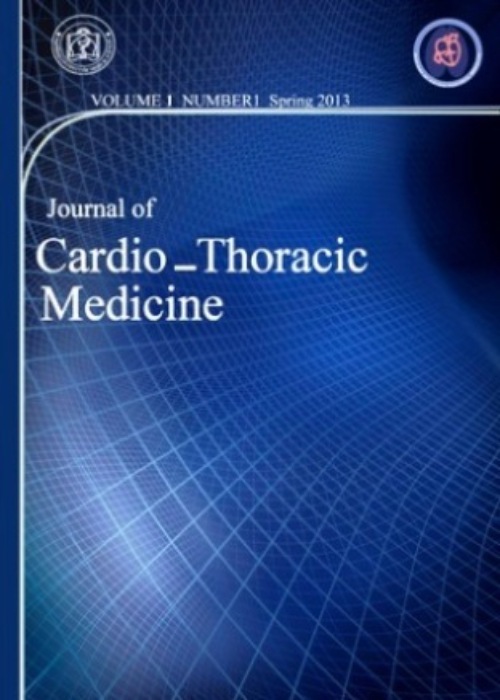Influence of The Prosthesis Type and Diameter in The Thrombocytopenia Associated with Aortic Valve Replacement Surgery
Author(s):
Article Type:
Research/Original Article (دارای رتبه معتبر)
Abstract:
Introduction
Aortic valve replacement with either mechanical or bioprosthetic valves is the gold standard treatment for severe aortic stenosis. Unfortunately, enhanced bleeding and hemodynamic decompensation thrombocytopenia is a frequent postoperative complication. The latter could be secondary to the shearing effect of mechanical prosthesis upon the blood flow that favors platelet aggregation or the presence of thrombogenic materials such as glutaraldehyde used to preserve bioprosthetic valves. Our aim was to discern which type of valve is associated with a more severe post-surgery thrombocytopenia so we compared postoperative platelet counts in patients treated with mechanical vs bioprosthetic valves.Material and Method
Two hundred and fifty patients with severe aortic stenosis underwent valve replacement surgery were included in the analysis. 126 patients received a mechanical (group A) and 124 patients received a biological (group B) prosthesis. A conventional surgical procedure with Extracorporeal Life Supports (ECLS) was performed in all. Patients’ age, gender, cardiovascular risk factors, type and time length of antiaggregant treatment, size of the implanted valve, and perioperative events were recorded. Pre-surgery platelet count and daily post-surgery registers of platelets count for a 10-day period was documented.Results
Platelet count before surgery was within normal values in both groups. There was a significant decrease the first postsurgical day in both groups (127±48 vs 224±56 in group A, and 132±45 vs 229±54 in group B, p <0.001). Normal platelet count, was reached the fourth post-surgery day in group A patients compared to the eighth day of group B. The differences in platelet count between both groups, independently of the postsurgical day, were highly significant. Thrombocytopenia remained significantly lower and did not reach normal values (141) in the 10 days follow-up in patients that received the 19 mm prosthesis, whereas those receiving the 21 mm valves reached normal values (150) the eighth day.Conclusion
Thrombocytopenia in patients undergoing aortic valve replacement is secondary to the synergic effect of ECLS, aldehydes present on the preservation solution of prosthesis, and the shear flow induced by the prosthesis diameter. The implant of small diameter prosthesis prolongs thrombocytopenia.Keywords:
Language:
English
Published:
Journal of Cardio -Thoracic Medicine, Volume:10 Issue: 3, Summer 2022
Pages:
1025 to 1031
magiran.com/p2487567
دانلود و مطالعه متن این مقاله با یکی از روشهای زیر امکان پذیر است:
اشتراک شخصی
با عضویت و پرداخت آنلاین حق اشتراک یکساله به مبلغ 1,390,000ريال میتوانید 70 عنوان مطلب دانلود کنید!
اشتراک سازمانی
به کتابخانه دانشگاه یا محل کار خود پیشنهاد کنید تا اشتراک سازمانی این پایگاه را برای دسترسی نامحدود همه کاربران به متن مطالب تهیه نمایند!
توجه!
- حق عضویت دریافتی صرف حمایت از نشریات عضو و نگهداری، تکمیل و توسعه مگیران میشود.
- پرداخت حق اشتراک و دانلود مقالات اجازه بازنشر آن در سایر رسانههای چاپی و دیجیتال را به کاربر نمیدهد.
In order to view content subscription is required
Personal subscription
Subscribe magiran.com for 70 € euros via PayPal and download 70 articles during a year.
Organization subscription
Please contact us to subscribe your university or library for unlimited access!


